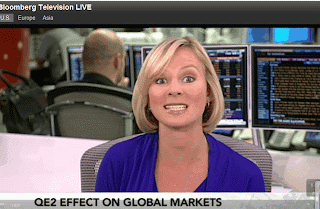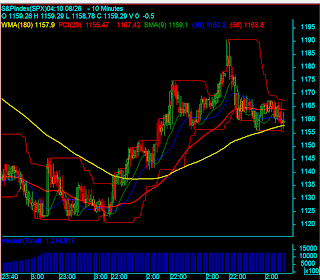Those who know do't talk, those who talk don't know
From Chapter 7 of Stanley Kroll's 'Dragons and Bulls' book.
The title of this chapter is an old, respected truism in Wall Street. I first
heard it from an experienced stock trader over 50 years ago when I was
a neophyte Merrill Lynch account executive. It has been part of my
professional strategy since I first learned it, for it is one of the few
significant maxims in an industry where irrelevant slogans and sayings
abound.
lt's too bad that not enough financial operators practise this
strategy. It could help traders and brokers in their speculative opera-
tions, especially in Asia, where so much of what passes for stock and
commodity analysis depends largely on uninformed tips, rumours,
stories and outright gossip. I would always put informed technical
analysis over unconfirmed tips and stories.
I had an interesting experience recently, which exemplifies this
point. The research director of a large Hong Kong investment firm
showed me a price chart of some stock and asked for my opinion. 'If
you are a buyer or a seller of this stock,' he asked me, 'how far would
you project the stock to move?' My reply was simple and direct. 'I don't
know.'
The gentleman was persistent and repeated the question. My reply
was the same, but this time l answered in greater detail. 'I don't think
that anyone could give you a competent answer, merely on the basis of
a single price chart with no further information or technical studies.'
Then I proceeded to suggest what additional information and studies I
would want to examine before even attempting to analyse the chart.
'That's extremely interesting,' he replied. 'Do you know that I've
shown the same chart to at least six other brokers and analysts, and
every one of them gave me a definite answer with specific buy and sell
points and even price objectives. And all of them combined would
orobablv have less vears of trading experience than you have.'
All I could say was, 'That's not surprising; it's what 1 would have
ex ed.'
$2" Livermore had a similar experience some 70 years ago. This is
how he described it:
'I was at a dinner party one evening and was seated next to a
man who had heard that I was in Wall Street. Ar one point in
the conversation, he asked if I could tell him how one could
make some quick money in stocks. Without answering the
question, I asked what business he was in, and he said that he
was a surgeon. I then asked if he could tell me how one could
make some quick money in surgery.'
We are continuously forced to come to grips with the unique
relationship between market news (stories, gossip and tips) versus
actual market action. I-low many times has a company announce some
very bullish piece of news - an increase in the dividend, improved
earnings or some acquisition — and the public goes charging in to buy
the stock? Then, after a few days of relative strength, the stock is in full
retreat with all the recent buyers, having bought on the bullish news,
sitting with big losses. How could that be? Wasn't the news very
bullish? Perhaps the answer lies in the fact that the stock had already
been going up for some time, with the 'insiders,' who knew about the
impending announcement, having been big buyers of the stock before
any bullish news was known. Then, the announcement was made and
the public rushed in to buy. Who do you think supplied the stock for
this (uninformed) buying? None other than the insiders, who were
accumulating stock in advance of the news.
Stock buyers of IBM experienced this first hand, during the
extended price decline from 1987 to 1993, when share prices declined
from 175.00 ti} 40.00. At any number of times the stock was
recommended by advisory services and brokerage firms, only to have it
continue sliding relentlessly over a six-year period.
The sugar market, too, provides an excellent glimpse at the unique
relationship between market news and market aciton. The way the
news is released after every move should be studied by thoughtful
investors. During an extended bear market in sugar, culminating
around the 2.50 level in mid-1985, the decline was accompanied by
Figure 7.1 Long-term (monthly) stock chart of IBM, covering the period
mid-1984 to mid—l994. Note the extended price decline from 175 to 40
over the six year period from l987 to 1993. '
every type of bearish news imaginable. But after the market had finally
reversed and was moving north, the bearish news items were put back
in the desk drawer and suddenly the bullish items were trotted out for
dissemination. On 26 January 1987, following a protracted 200-point
sugar rally (equal to a move of US$2,24O pet contract on just a
US$600 margin), Tb: W/all Street journal noted the following:
'Reports that the Soviet Union had been a large buyer of refined
sugar in the world market helped futures to extend their
advance . . . . Analysts said Moscow had bought 500,000 to
700,000 metric tons of raw sugar . . . and one analyst said the
Soviets may buy as much as a million tons more. Analysts said
prices were also buoyed by a report that Brazil will push back
contracts to export 750,000 to 1,S00,00 tons of raw sugar to
1988 or 1989 and by reports that Cuba is having problems
harvesting and milling its cane sugar crop. In Brazil, diversion of
sugar to alcohol production, stronger domestic consumption, and
indications that drought may reduce the crop have created tight
supplies, analysts said.'
The analysts seem to have 'trotted out' every bullish item they could
think of after the market advanced. But you can be sure that, following
the first big price decline, the 'news' would suddenly become totally
bearish. One must wonder who these 'learned' analysts are who are
always able to explain why a market made a move after the fact, but
never seem to know, in advance, what to do.






















































